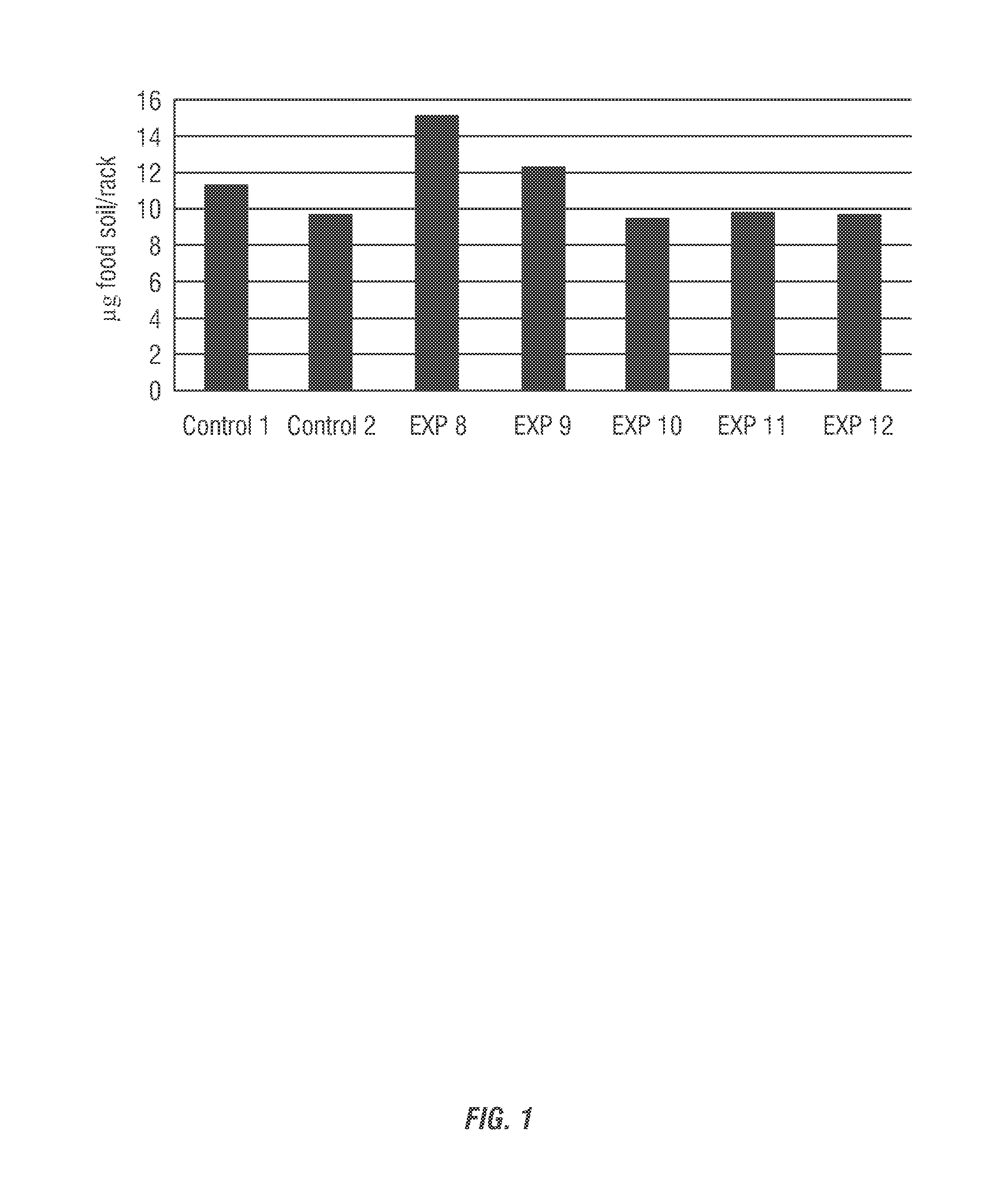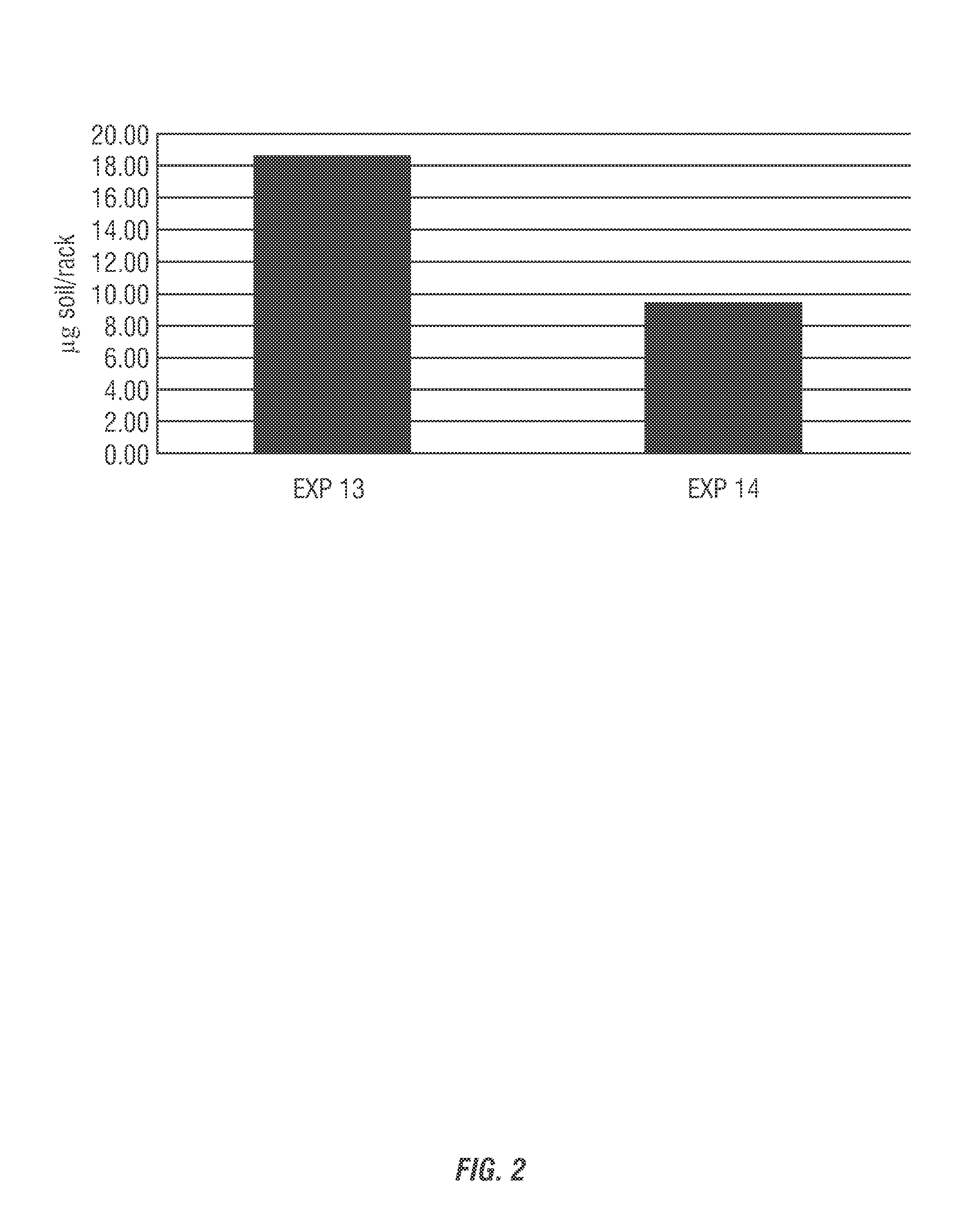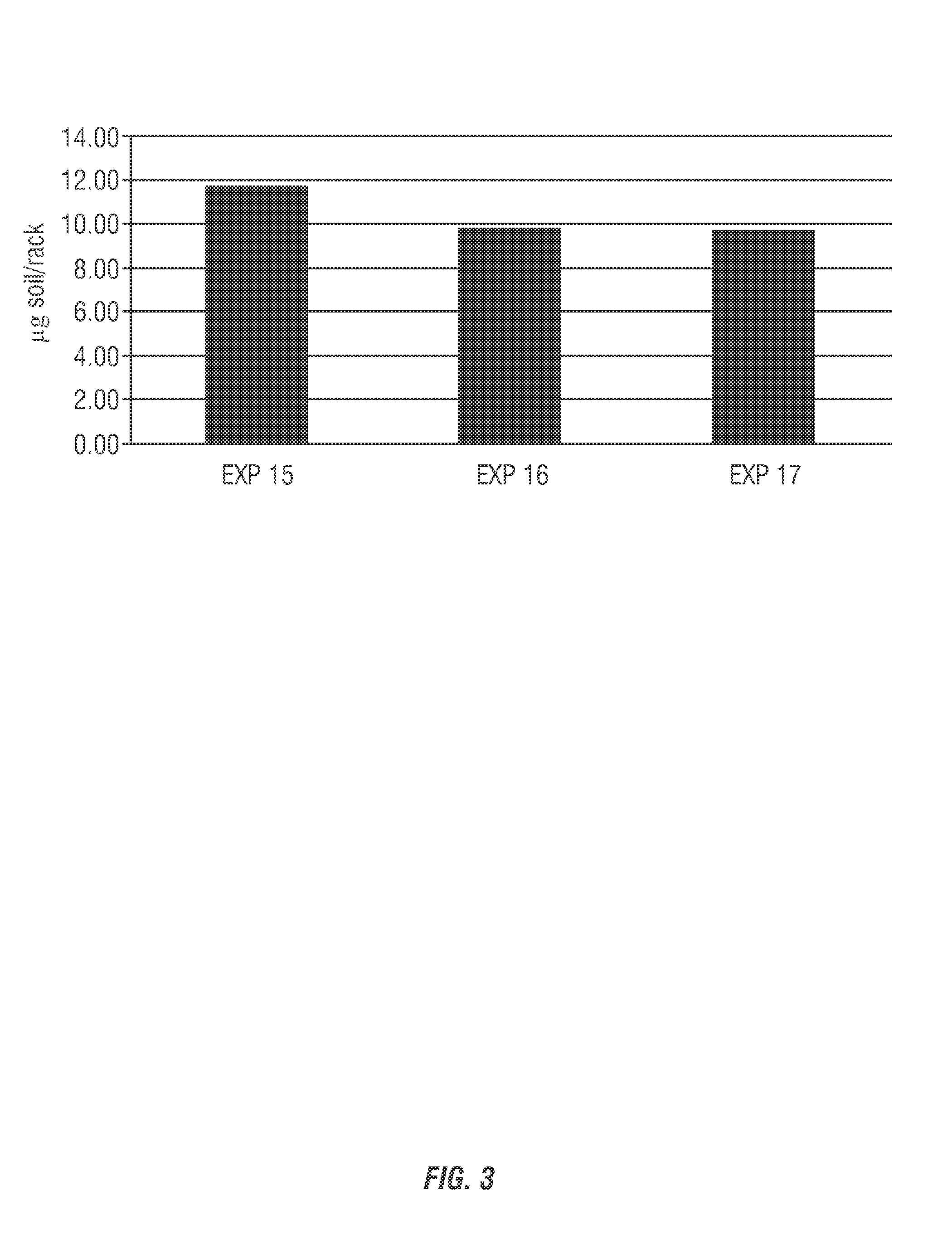Method of reducing soil redeposition on a hard surface using phosphinosuccinic acid adducts
a technology of phosphinosuccinic acid and hard surface, which is applied in the direction of detergent compositions, cleaning using liquids, inorganic non-surface active detergent compositions, etc., can solve the problems of heavy soil accumulation on hard surfaces, and achieve the effect of minimizing significant buildup and/or accumulation and efficient detergency
- Summary
- Abstract
- Description
- Claims
- Application Information
AI Technical Summary
Benefits of technology
Problems solved by technology
Method used
Image
Examples
example 1
[0148]Hard water film accumulation testing was conducted using a light box evaluation of 100 cycle glasses. The 100 cycle experiment was performed using six 10 oz. Libby glasses on a Hobart AM-15 ware wash machine employing 17 grain water (hard water source). Initially the glasses were prepared using a cleaning cycle to completely remove all film and foreign material from the glass surface.
[0149]The Example compositions shown in Table 1 were evaluated. The controls employed were a commercially-available alkali metal detergent composition (Solid Power XL, available from Ecolab, Inc.) (Control 1) and a 75% caustic (sodium hydroxide) / 25% water alkaline detergent (Control 2).
TABLE 1Raw materialEx 1Ex 2Ex 3Ex 4Ex 5Ex 6Water12.718.514.314.314.313.6Sodium hydroxide69.171.669.869.869.869.1(beads)Pluronic N3: EP / PO0.90.90.90.90.9—copolymersPSO derivatives,17.3957.51017.340%Acusol 445N (45%):——107.510—polycarboxylic acid
[0150]The ware wash machine controller was set to automatically dispense ...
example 2
[0155]The cleaning efficacy of the detergent compositions according to the invention was evaluated using a 7 cycle soil removal and antiredeposition experiment. The example composition shown in Table 3 was evaluated against a commercially-available Control 1 (Solid Power XL, available from Ecolab, Inc.).
TABLE 3Raw materialEx 7Water10-20Sodium hydroxide (beads)50-70PSO derivatives (40%) 5-20Etch Protection0.1-5 Nonionic Surfactant(s)0-5Bleach0-5Dye0-1Fragrance0-2Fillers / Additional 0-15Functional Ingredients
[0156]To test the ability of compositions to clean glass and plastic, twelve 10 oz. Libby heat resistant glass tumblers and four plastic tumblers were used. The glass tumblers were cleaned prior to use. New plastic tumblers were used for each experiment.
[0157]A food soil solution was prepared using a 50 / 50 combination of beef stew and hot point soil. The soil included two cans of Dinty Moore Beef Stew (1360 grams), one large can of tomato sauce (822 grams), 15.5 sticks of Blue Bon...
example 3
[0164]A quantitative test method for evaluating film development in any type dish machine in the field for warewash applications was used to evaluate test compositions in comparison to efficacy of commercially-available compositions. Determining what type and the amount of a film in a dish machine is important for formulating compositions for preventing build up or the accumulation of the film and / or cleaning of the film. The type of build up impacts the formulation of compositions for treatment. Stainless steel “coupons,” or precut pieces of stainless steel (1″×3″ pieces) are attached to a dish machine to represent the inside of the dish machine. From this, the coupons are removed and the resulting build up is analyzed.
[0165]Prior to attachment to the dish machine, stainless steel coupons were cleaned (dish soap and non-abrasive sponge), rinsed and let to air dry. The pre-cleaned coupons were weighed and recorded as the “before” weight. The stainless steel coupons were attached (we...
PUM
| Property | Measurement | Unit |
|---|---|---|
| temperature | aaaaa | aaaaa |
| detergent | aaaaa | aaaaa |
| pH | aaaaa | aaaaa |
Abstract
Description
Claims
Application Information
 Login to View More
Login to View More - R&D
- Intellectual Property
- Life Sciences
- Materials
- Tech Scout
- Unparalleled Data Quality
- Higher Quality Content
- 60% Fewer Hallucinations
Browse by: Latest US Patents, China's latest patents, Technical Efficacy Thesaurus, Application Domain, Technology Topic, Popular Technical Reports.
© 2025 PatSnap. All rights reserved.Legal|Privacy policy|Modern Slavery Act Transparency Statement|Sitemap|About US| Contact US: help@patsnap.com



